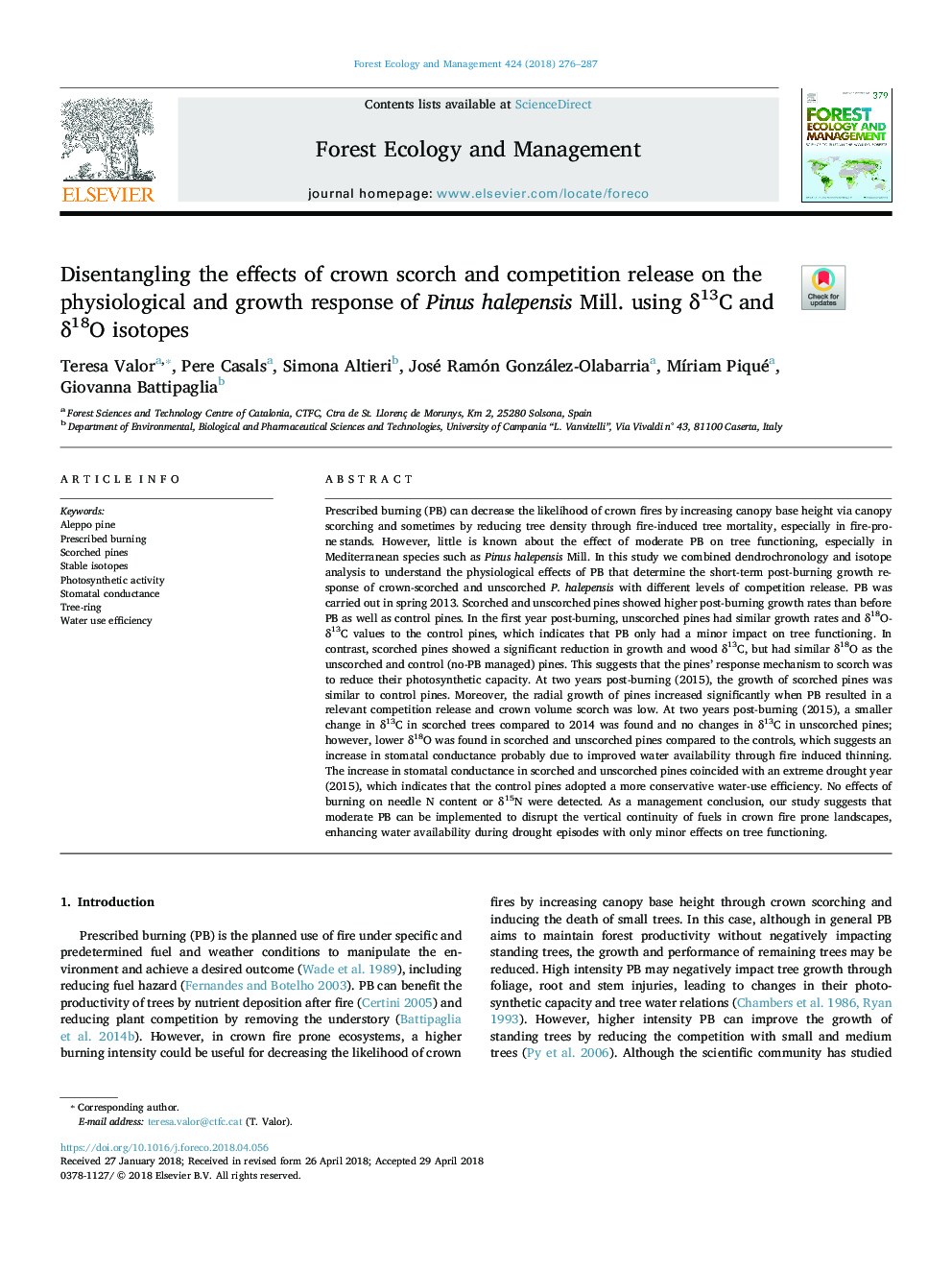| Article ID | Journal | Published Year | Pages | File Type |
|---|---|---|---|---|
| 6541605 | Forest Ecology and Management | 2018 | 12 Pages |
Abstract
Prescribed burning (PB) can decrease the likelihood of crown fires by increasing canopy base height via canopy scorching and sometimes by reducing tree density through fire-induced tree mortality, especially in fire-prone stands. However, little is known about the effect of moderate PB on tree functioning, especially in Mediterranean species such as Pinus halepensis Mill. In this study we combined dendrochronology and isotope analysis to understand the physiological effects of PB that determine the short-term post-burning growth response of crown-scorched and unscorched P. halepensis with different levels of competition release. PB was carried out in spring 2013. Scorched and unscorched pines showed higher post-burning growth rates than before PB as well as control pines. In the first year post-burning, unscorched pines had similar growth rates and δ18O-δ13C values to the control pines, which indicates that PB only had a minor impact on tree functioning. In contrast, scorched pines showed a significant reduction in growth and wood δ13C, but had similar δ18O as the unscorched and control (no-PB managed) pines. This suggests that the pines' response mechanism to scorch was to reduce their photosynthetic capacity. At two years post-burning (2015), the growth of scorched pines was similar to control pines. Moreover, the radial growth of pines increased significantly when PB resulted in a relevant competition release and crown volume scorch was low. At two years post-burning (2015), a smaller change in δ13C in scorched trees compared to 2014 was found and no changes in δ13C in unscorched pines; however, lower δ18O was found in scorched and unscorched pines compared to the controls, which suggests an increase in stomatal conductance probably due to improved water availability through fire induced thinning. The increase in stomatal conductance in scorched and unscorched pines coincided with an extreme drought year (2015), which indicates that the control pines adopted a more conservative water-use efficiency. No effects of burning on needle N content or δ15N were detected. As a management conclusion, our study suggests that moderate PB can be implemented to disrupt the vertical continuity of fuels in crown fire prone landscapes, enhancing water availability during drought episodes with only minor effects on tree functioning.
Keywords
Related Topics
Life Sciences
Agricultural and Biological Sciences
Ecology, Evolution, Behavior and Systematics
Authors
Teresa Valor, Pere Casals, Simona Altieri, José Ramón González-Olabarria, MÃriam Piqué, Giovanna Battipaglia,
